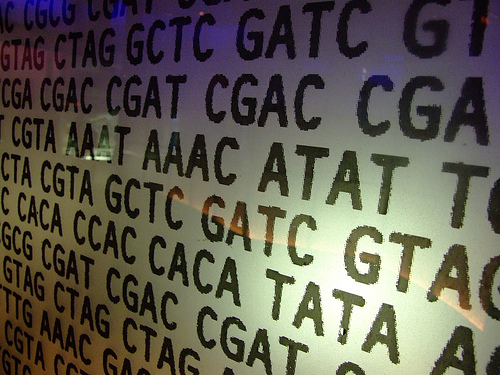
The General Theory of Evolution states that “all living forms in the world have come from a single source which itself came from an inorganic form” (Sarfati). This means complex life forms have come from relatively simple one-celled organisms, forming a chain leading to the modern species.
It is common knowledge that single-celled organisms have considerably less volume and complexity in their genetic code than multi-celled organisms. “The key issue”, writes Dr. Jonathan Sarfati, “is the type of change required–to change microbes into men requires changes that increase the genetic information content”. Evolutionists agree and believe that random mutations sorted by natural selection are the source of increased genetic content. But none provide a single example of functional new information being added to genes. Rather, they all involve sorting and loss of information.
The living cell was not always recognized for its vast complexity. Even “Darwin himself thought the cell was a simple blob of protoplasm, and he conjectured that it evolved in a warm little pond” (Colson 53). Modern genetics has revealed that the cell is far more complex than Darwin could have guessed. DNA, the basic packet of genetic information, is far too intricate to arrive by chance. Dr. Colson describes DNA as:
A language in the heart of the cell, a molecular message, a set of instructions telling the cell how to construct proteins – much like the software needed to run a computer. Moreover, the amount of information DNA includes is staggering: a single cell of the human body contains as much information as the Encyclopedia Britannica–all 30 volumes–three or four times over (55).
The occurrence of natural selection in nature is scientific fact. Natural selection specializes the species to survive in the current conditions; bacteria resistant to antibiotics survive while others die out. Longer-haired animals live in sudden cold snaps while shorter-haired animals are removed from the gene pool. Predators eat the more visible white moths and their coloration traits are seen less often.
Natural selection is heralded as the driving force for a species to progress up the evolutionary ladder. It, however, does not account for increased genetic content. Natural selection operates on a net loss of genetic information and has never accounted for new genetic traits. Natural selection is counter-productive to a species in the long run. When a population becomes specialized, like long-furred animals surviving in cold climates, the population looses the genes that would aid them if the weather shifted to a warmer climate (Sarfati). Natural selection creates a loss of information in the gene pool and if it had any merit in creating new genetic content, evidence would surface in selective breeding. However, to the dismay of the evolutionists, selective breeding does not provide any such evidence.
Despite impressive results, there remains an irrefutable limitation to what can be bred. Dr. Colson reminds readers that “breeding does not create new genes . . . a bird cannot be bred to grow fur. A mouse cannot be bred to grow feathers. A pig cannot grow wings”. Breeding is like shuffling already existing cards. A trait can be enhanced to a point, and then progress halts “because once all the genes for a particular trait have been selected, breeding can go no further”. The “fatal flaw” in Darwin’s theory is that breeding “eventually reaches a limit that breeders cannot cross” (73-74).
The famous breeder Luther Burbank, who is arguably the greatest breeder of all time, said:
The tendency for organisms to stay true to type is so constant that it can be considered a natural law–-what he called the law of Revision to the Average. It’s a law, he said, that keeps all living things within some more or less fixed limitations (78).
With both breeding and natural selection’s inability to account for new genetic content, evolutionists must put all hope in random mutation. Many scientists have concluded that the “only new source of genetic material in nature is mutations” (Colson 75). However, this does not mean that this new content adds to the well-being of the species.
Mutations are often seen today. They are the leading cause of deadly disease such as: hereditary disease, cancer, birth defects, growth problems, mental disease, Alzheimer’s disease, abnormal hormone activity and blood disorders. Mutations have been a stumbling block to the human species, arguably causing more deaths than any other cause. Mutations are so problematic because they are essentially random spelling errors that appear from an imperfect copy of genetic code. Almost all mutations are harmful, often lethal to the organism so that if mutations were to accumulate, the result would more likely be de-evolution than evolution. Mutations cause a mess to the ordered DNA coding system and in most cases destroys it, resulting in fatal errors. Random mutations cause a loss in complexity and, ultimately, a loss in volume to the genome of a species.
Dr. Ruse remarks on evolutionists’ statements that confirms the belief that mutations are ultimately harmful:
Indeed, the words of evolutionists are turned against themselves. Mutations are random (Waddington), very rare (Ayala), and almost invariably, very harmful to their possessors (Muller and Julian Huxley). They just cannot lead to new kinds of organisms (257).
Believing that random mutations would benefit an organism is like believing that random letters and punctuation marks would spontaneously develop into an apologetics article. So where does the new information come from? Evolutionary theory provides no answer.
-Luke
Recent Comments